The Sea Turtle Rehabilitation Centre in North Malé Atoll is located at One&Only Reethi Rah Resort, which is found in the northwest of the atoll. This facility houses long-term non-critical patients and patients nearing the end of their rehabilitative care with us being staged for release.
Long-Term Rehabilitation
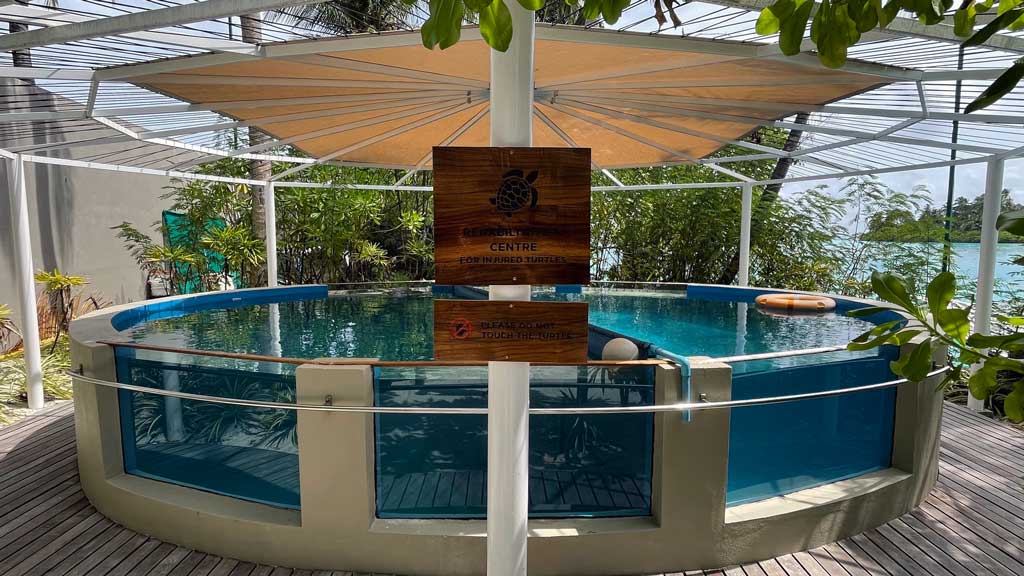
The Sea Turtle Rehabilitation Centre has one large tank, measuring 7.5m by 6m, and 2m deep, with the capacity to hold up to two turtle patients at a time. The Rehabilitation Centre is looked after by one of our Sea Turtle Biologists under the supervision of our veterinary team.
The patients are typically sea turtles in need of long-term rehabilitation without veterinary care. They often suffer from buoyancy syndrome as a result of having been entangled in marine debris. This is a condition that can take months, or even years, to resolve itself.
Buoyant sea turtles cannot survive in the wild as they are unable to dive to find food and rest. The best treatment for these cases is time, in a safe environment with proper nourishment and encouragement to dive.
The tank at the Rehabilitation Centre is particularly suited for this type of long-term rehabilitation as it is deep enough for the turtle patients to practice diving. We also take our patients for regular sea swims. The swims allow them to exhibit natural diving behavior and help speed up the recovery process.
Sea Turtle Husbandry
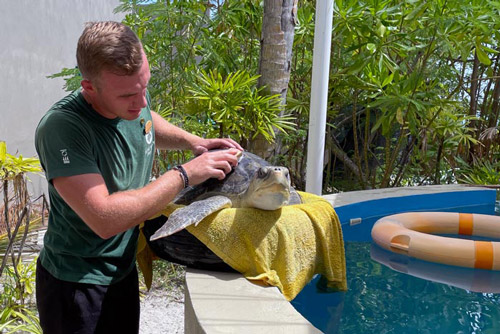
Our Sea Turtle Biologist takes care of the patient under guidance from the veterinary team, and makes sure the turtle patients are fed and have clean tanks – and that the patients are clean too.
In the wild, cleaner fish keep a sea turtle’s shell free of algae and epibionts. However in a tank sea turtles need a little help with that. So once a week we have a “spa-day” where the patients are removed from the tank and have their shells cleaned with recycled toothbrushes.
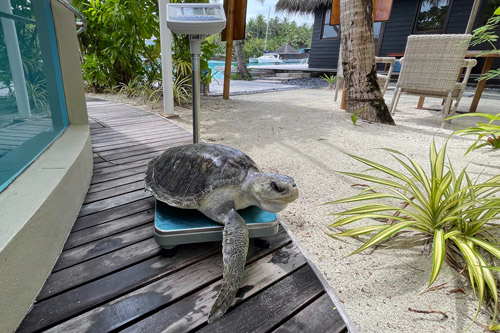
We also use this opportunity to weigh the patients and check them for any signs of infections. Sea turtles living in a tank can get fat and often lazy thanks to easy access to food and a limited area for activity. In fact sometimes we have to put patients on a diet to make sure they do not get too heavy for their size!
Guests at One&Only, Reethi Rah can visit the Rehabilitation Centre to meet the patients and learn about sea turtles. School children are also welcome to visit for a full day marine education program in collaboration with the resort.
Triage And First Aid
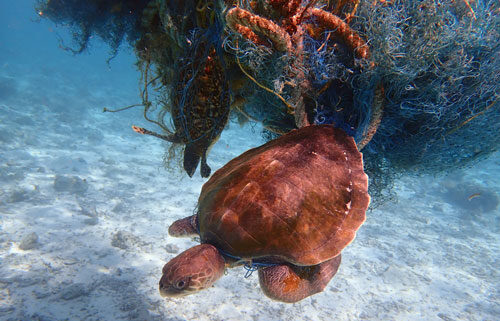
Because of its central location and proximity to the airport, the Sea Turtle Rehabilitation Centre often functions as a triage and holding facility. Newly rescued sea turtles are brought here and given first aid as well as a video consultation with the veterinary team. If in need of veterinary care, the patient will stay at the Rehabilitation Facility until transport can be arranged to the Marine Turtle Rescue Centre. If this is not the case, they either remain at the Rehabilitation Centre until they are ready to be released or are transferred to another rehabilitation facility.
The Founding And Funding
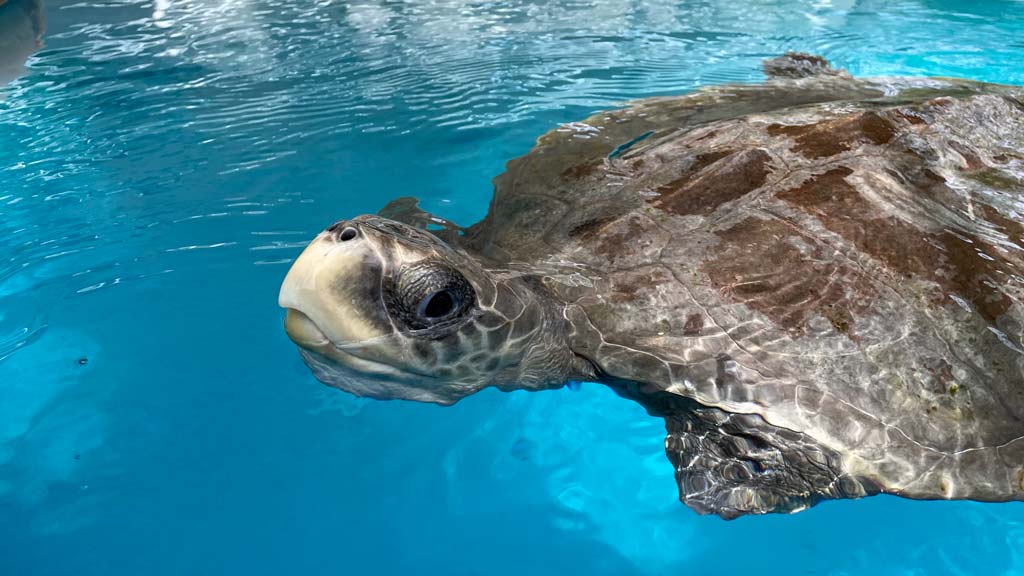
The tank at the Sea Turtle Rehabilitation Centre is a community funded project. The staff at One&Only, Reethi Rah raised all the funds required for the construction by having fundraiser parties and events over the course of a year.
We would like to extend our gratitude to the staff and management at One&Only, Reethi Rah for hosting us and for always supporting our work in any way they can; including arranging transfers for our patients to the Rescue Centre and organising transport of vital medication.
We would also like to thank everyone who rescues and sends us injured sea turtles, as well as everyone who has adopted one of our turtle patients. We can only do what we do because of your support!

